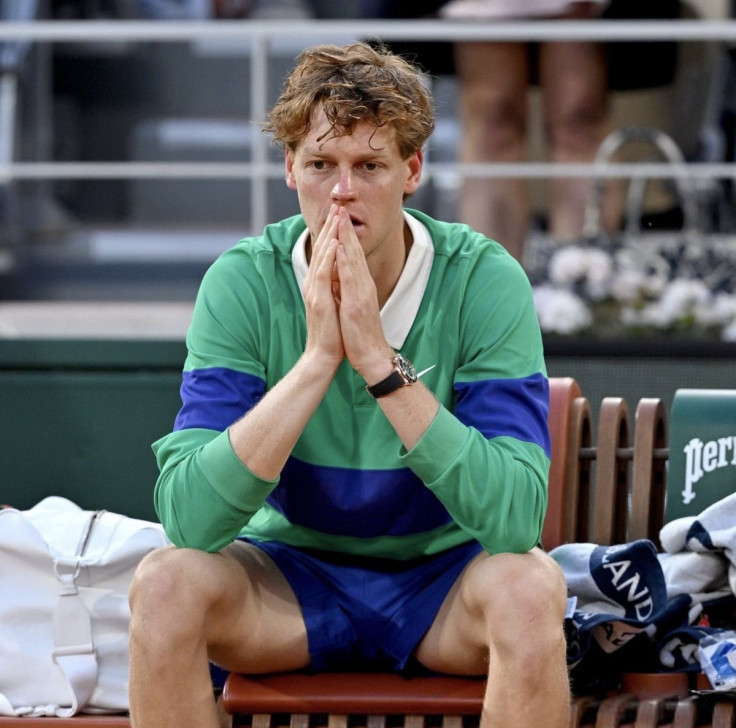They Said He Couldn't Recover, Jannik Sinner Proved Them Wrong at Wimbledon
Sinner proved that embracing vulnerability can be the key to true strength

Jannik Sinner's Wimbledon 2025 title didn't just crown a champion, it marked a cultural turning point. Just 40 days after an emotional and painful exit at Roland Garros, the 22-year-old Italian returned to win the most prestigious title in tennis. In doing so, he demonstrated that vulnerability, long misunderstood in men's sport, can be a source of strength.
He Was Written Off After Roland Garros, Then He Proved Them Wrong
At Roland Garros, Sinner endured one of the most painful defeats of his career. In the men's singles final, he held three championship points against Carlos Alcaraz but ultimately lost in five sets after 5 hours and 29 minutes, the longest French Open final in history.
Though he showed composure post-match, the emotional weight was evident. In the weeks that followed, Sinner reflected on the loss, saying he had to "learn from pain and pressure" to become stronger.
Five weeks later, he returned to face Alcaraz again, this time at Wimbledon, and won his first Grand Slam title on grass. The comeback underlined his growth not just as a player, but as a competitor shaped by resilience.
The difference a few weeks can make 🫶 #Wimbledon
Sinner Used Emotional Clarity to Fuel a Wimbledon Comeback
Despite earlier injury concerns, Sinner entered Wimbledon 2025 resolute and composed. He handled pressure with calm tactical intelligence, culminating in a dominant semi‑final victory over Novak Djokovic 6–3, 6–3, 6–4 — a performance commentators described as clinical and confident in the face of past physical setbacks.
He then faced rival Alcaraz in the final, a rematch of their French Open showdown just five weeks earlier, and triumphed in the four-set match, 4–6, 6–4, 6–4, 6–4. Commentators highlighted his mental strength and ability to perform under pressure as critical to the comeback, noting how he turned past disappointment into strategic advantage.
Jannik Sinner reflected on the emotional journey, emphasising that learning from defeat and committing to continuous preparation were key to his Wimbledon success
The Numbers Reveal a Powerful Narrative
- 40 days: The time between his Roland Garros defeat and Wimbledon victory.
- £3,000,000 (~$4.0 million) : His prize money for winning Wimbledon.
- 10.4 million: Total views on social videos featuring Sinner post-final, according to data from TennisTV.
These aren't just performance stats. They underscore how emotional transparency and personal growth have become key to modern sporting success.
Redefining Masculinity in Men's Tennis
Men's tennis has traditionally revered emotional control, think Federer's poise, Nadal's intensity, Djokovic's determination. With Wimbledon 2025, Jannik Sinner introduced a different dimension. He demonstrated that recognising emotional struggle and recovering from it can be integral to athletic success. His composed performance against Alcaraz highlighted mental maturity as much as physical skill.
Media coverage emphasised how Sinner's emotional honesty and resilience resonated with fans seeking deeper engagement with athletes' mental journeys. Commentators reflected on his ability to channel internal adversity into strategic focus.
While Sinner did not publicly state this himself, his Wimbledon victory, and the public discussion around it, helped amplify a broader movement in sport: the acceptance of emotional transparency as a form of strength.
2025. J.Sinner #Wimbledon
Why This Moment Matters for the Future of Sport
Sinner's Wimbledon win is not only a comeback story, it is a blueprint for change. He showed that:
- Vulnerability can strengthen, not sabotage, performance.
- Emotional honesty builds connection and resilience.
- Elite sport must evolve to embrace the mental as well as the physical.
As Dr Baldini summarised:
'This is the future. Emotionally intelligent athletes will define the next era of sport'.
Embrace a New Definition of Strength
Jannik Sinner didn't succeed despite being vulnerable, he succeeded because of it. His story urges fans, coaches and young athletes to rethink what strength looks like in high-performance environments.
© Copyright IBTimes 2025. All rights reserved.





















